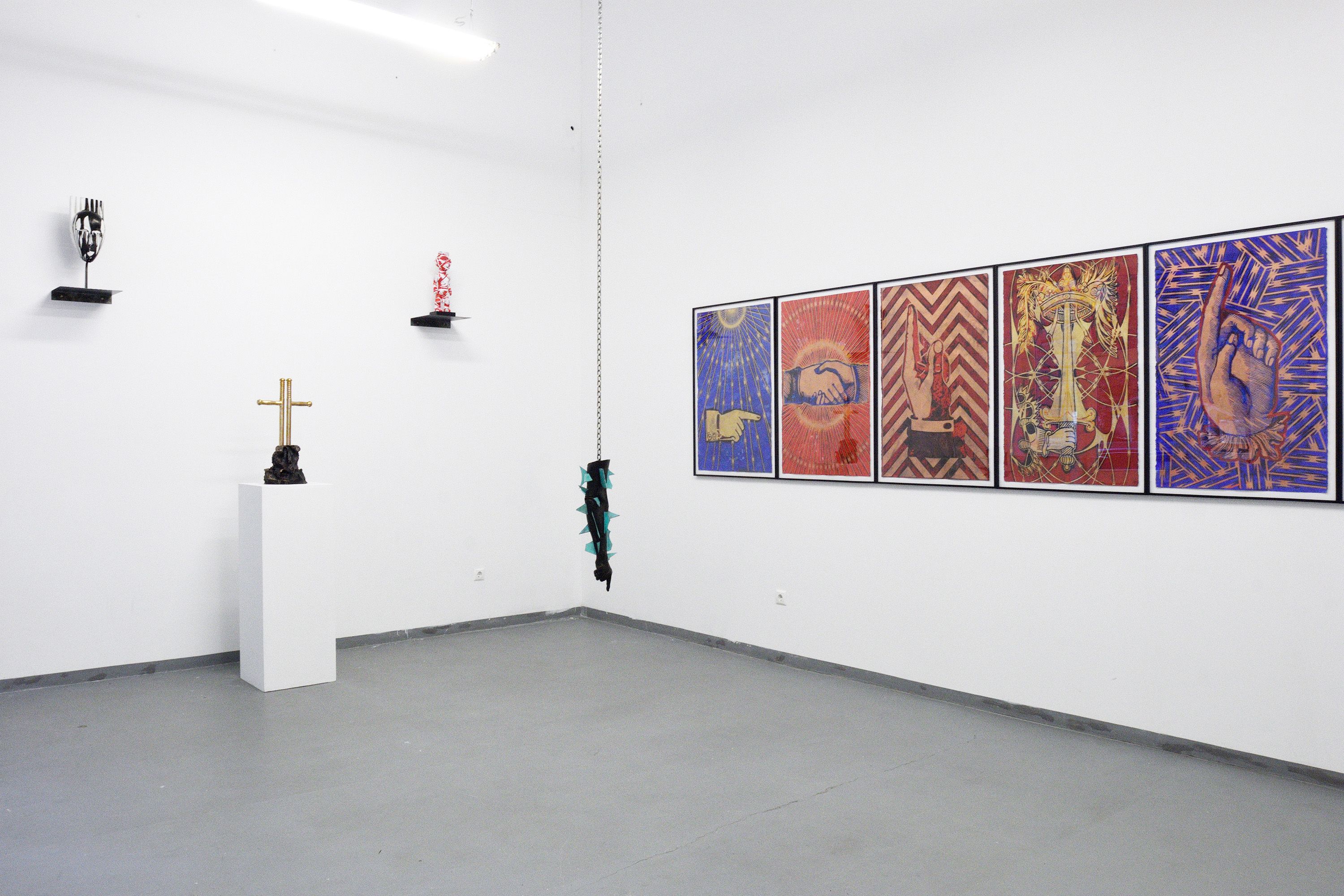Kendell Geers
EsemPlastiK – Biting The Hand That Feeds
| Venue: | acb Attachment |
| Date: | Apr 19 – Jun 15, 2018 |
Description
In order to write about his work in the Biographia Literaria, the Romantic poet Samuel Taylor Coleridge had to invent the word Esemplastic to describe the contradictions of his practice. The word is drawn from the Ancient Greek word πλάσσω which means "to shape" and is used to refer to the interweaving of opposites or the process of moulding a dualistic object into unity through the power of the imagination.
For his second solo exhibition at acb Gallery in Budapest, the Afro-Belgian artist Kendell Geers decided to invoke Coleridge, calling the show Biting The Hand That Feeds, weaving the warp of contradictions of his own biography through the weft of his work. Geers was born into Apartheid South Africa, but at a very tender age fled to London the regime as a refugee, seeking political asylum. Once Mandela was released and it was safe to return, he found himself back home, like the prodigal son, at the dawn of a new democracy.
Growing up on the front lines of the fight for freedom, democracy and civil liberty, Kendell Geers, believes that the worlds of art and politics should not be divided, that it is only through embodied experience that the artist may give birth their creation. He eventually changed his date of birth to May 1968 in order to give birth to him self with an identity of his own making. Biting The Hand That Feeds takes the Holy Right Hand of St. Stephen as its starting point, a mysterious and magical mummified holy right fist of a 1,000 year old Saint and King now housed in the cathedral bearing his name in Budapest. To this religious relic, the artist adds an art historical bind, the infamous 1915 Readymade of Marcel Duchamp called In Advance of a Broken Arm, and Geers hands his own limbs cut off at the shoulder, cast in bronze and suspended on chains. The left hand makes the sign of the Manu Fico and the right John the Baptist, ancient pagan and Christian symbols of fertility and initiation, used here to spiritualise the matter of contemporary art. For Geers, the work of art is both physical and meta-physical, an object, image, sign or token that speaks both of spiritualised matter and materialised spirit.
The theme of the hand, arm, sign, symbol, talisman and token are further fleshed out through drawings, paintings and sculptures. The pointing Index Finger of John the Baptist that featured so prominently in art history eventually became the sign post device of the early twentieth century. The sign featured prominently in Dada posters, pamphlets and works of art, the sacred made profane, the index finger now re-cast into its role as the “Trigger Finger.” To this rewriting of history, Geers adds his own touch, hands, fingers, arms and limbs pointing, falling, grabbing and gripping, the rising signs of protest, a clenched fist that signals the united strength of minority rights.
Geers is both an African and a European citizen, an artist and a shaman, an ecological activist and a libertarian, a poet and a painter working with words and in spirit, the destroyer of dualism and the creator of contradiction. Biting the Hand That Feeds is a portrait of the artist’s struggle with identity, history, faith and form through the prism of opposites shaped through the power of imagination into the fabric of art.
The exhibition opens in the frame of Budapest Art Week
The exhibition is supported by NKA
____________________________
Kendell Geers (b. May 1968) is a South-African artist living in Brussels.
Operating with the mediums of photography, painting, drawing, sculpture, installation and performance, Kendell Geers employs a wide range of references – from art history to pornography, iconography to kitsch, or complex political references to racial or religious stereotypes – to create critical, humorous and confrontational works that disrupts social norms and codes.
He participated in documenta 11, Kassel (2002), the 29th São Paulo Biennial (2010) and the 52nd Venice Biennale (2007) amongst others. His most important solo exhibitions include States of Emergency, Vienna Secession, Vienna (1999), Sympathy for the Devil, Palais de Tokyo, Paris (2002), Irrespektiv, Stedelijk Museum voor Actuele Kunst, Ghent (2007) and MOCA, Musée d'art contemporain de Lyon (2008), Kendell Geers 1988-2013, Haus der Kunst, Munich (2013).

